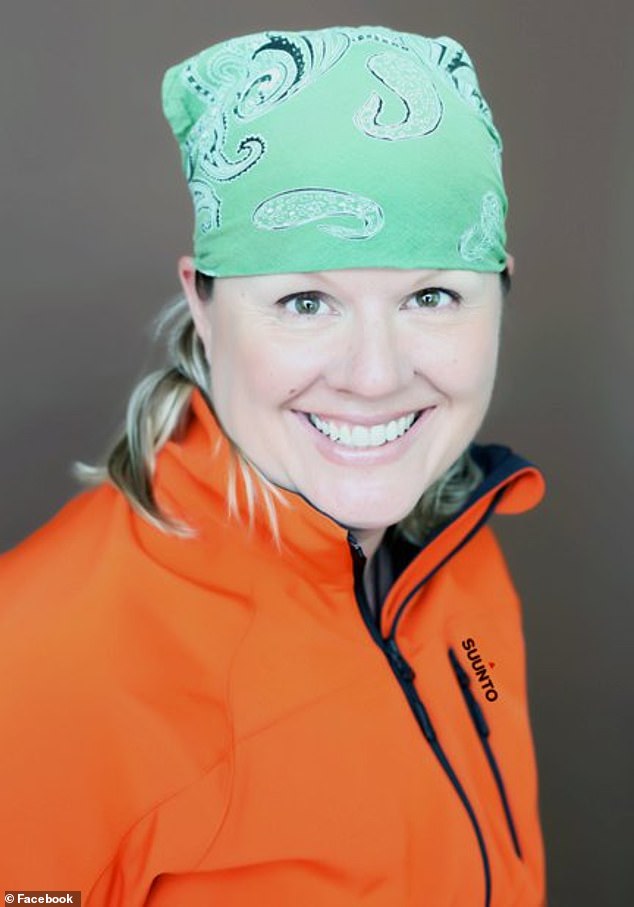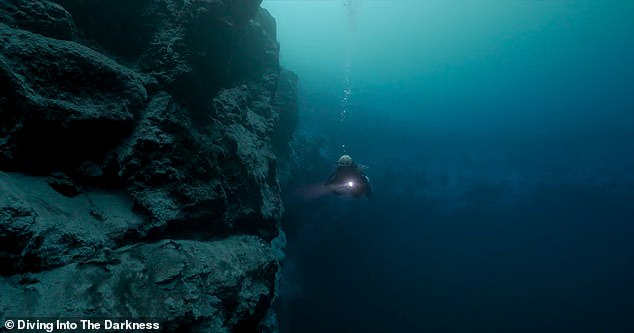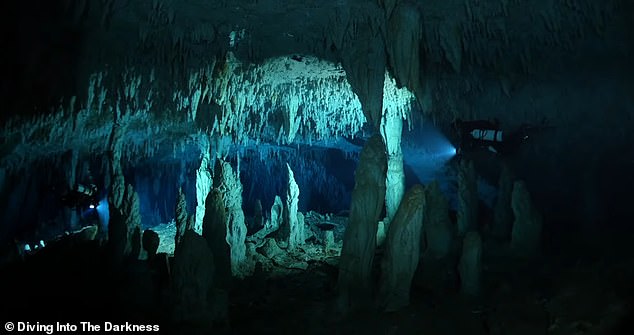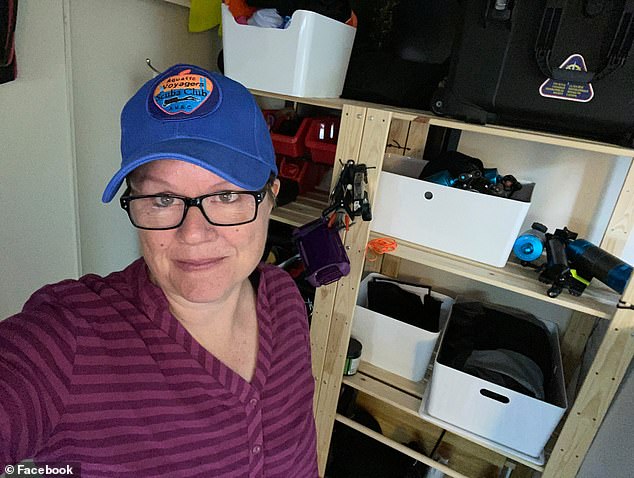Horror as female diver is sucked through Antarctic iceberg and trapped underwater by ferocious current
A female diver has shared the horrors she faced after being sucked into an Antarctic iceberg and trapped underwater by a raging current.
Jill Heinerth, now 60, a Canadian cave diver and underwater explorer, told in an article for People how she dived hundreds of meters to intercept the largest iceberg in history.
She talked about how she, her former husband Paul Heinerth and the late cameraman Wes Skiles faced unpredictable currents and freezing temperatures during the multi-day dive.
During the final dive, the trio narrowly escaped the fall when they were sucked into the iceberg by an extremely strong current.
“Literally minutes later we might not have had the upper hand,” wrote Heinerth, whose dives are captured in a new documentary, Diving into the Darkness.
Jill Heinerth, now 60, a Canadian cave diver and underwater explorer, told in an article for People how she dived hundreds of meters to intercept the largest iceberg in history

She told how she, her former husband Paul Heinerth and late cameraman Wes Skiles faced unpredictable currents and freezing temperatures during the multi-day dive
Heinerth said she dived to the site twice before almost losing her life.
“I thought taking these risks really mattered for our understanding of the planet and the changes we would face in the future, but I was nervous,” she said, thinking before the first dive, Heinerth explained out.
She explained that when the iceberg melts, “weird currents and currents” are created due to the difference in density between the iceberg water, which is fresh water, and the ocean, which is salt water.
‘So sometimes we would swim close to the ice and then suddenly get sucked down.
‘It really felt like a chaotic environment. It was adapt or dive.’

The diver said she dived to the iceberg’s location in Antarctica twice before almost losing her life
During the first dive, Heinerth said she ventured down about 40 meters, “not even knowing where the seabed was.”
“And that’s really at the edge of where we wanted to work in this very close environment, because deep dives take a longer time to slowly come back to the surface,” she wrote.
The experienced diver said she should have realized something was wrong when she saw filter-feeding organisms on the seabed.
“I should have paid attention immediately, because the current was strong and the current brings food to the stationary animals that were firmly anchored to the seabed,” Heinerth said.
“And that should have been like an ‘A-ha.’ [moment]. Everything was anchored here because it had to be that way.’
Soon the current increased.
‘We heard all these cracks and pops. I could feel them in my breastbone,” she said.
‘We turned to come out and started swimming up, but I realized the door we had entered was no longer there. That ice had blown in or fallen off the iceberg and literally closed our access.’
The group eventually managed to ‘find a new way out’ and later made a second dive to the same location.

Heinerth said she “thought that taking these risks really mattered for our understanding of the planet and the changes we faced in the future.”

During the first dive, Heinerth said she dived down about 40 meters, “not even knowing where the seabed was.”
“This time the current was even stronger and we were literally torn through the iceberg and dropped off on the other side, where we had to return to the surface very slowly to take into account the time we had been underwater,” says Heinerth . shared.
“And the last time we dived that particular spot, we realized it was a bad idea to get carried away by the current.”
She said the current was so strong that that time she “literally stuck my hands into the seabed to pull myself along,” even though she had a leak in her glove that “kind of paralyzed my hand because it was so cold.”
At that point, the planned one-hour dive turned into “this three-hour fight for our lives,” Heinerth said, as the group was sucked into the iceberg.
“When they say your life flashes before your eyes, that’s not really the case,” Heinerth said.
‘You’re thinking some really stupid thoughts. And then you say, “Wait a minute. I have to concentrate.”
‘I can’t figure out how to get out of the iceberg. I just think, ‘What’s the next best step toward survival?'”
But at the same time, she said, she continued to worry that they would die.

During the last dive, Heinerth and her crew were sucked into the iceberg by the strong current
She then decided to take charge, she said, and told Skiles to ditch the big camera he was carrying.
“Every time you work really hard on the rebreather, a diving device, you’re actually pushing the limits of what it can do,” Heinerth explained. ‘If it’s not able to handle the amount of carbon dioxide you’re emitting, you could pass out.
“And if I suddenly had to worry not only about myself, but also about the rescue of my colleague, it would be game over for both of us.”
She said the trick is to remain calm as she called the dive and tried to guide her fellow divers back to the surface.
If she hadn’t done that, Heinerth said, “We might not have gotten out and there wouldn’t have been any rescue.”
“There was no one there equipped to save us,” she explained. “The most qualified people are already in the cave.”

Heinerth described trying to remain calm as she completed the dive and led her fellow divers back to the surface.
At first, she said, she had trouble getting back up because “every time I tried, the current would blow us back down and back into the iceberg.”
But eventually she realized that there were small thumb-sized fish digging into the ice wall, and she could use the holes they created as a handhold to pull herself up.
During the climb they had to keep looking for places where they could hide from the current, ‘but then you sit still, and it is colder than ice cubes freezing in your refrigerator, because salt water has to be colder to freeze.’
Eventually the crew managed to reach back to the surface, but that proved to be dangerous in itself.
“The biggest risk is actually as soon as you hit the surface, when you can literally freeze tissue on the spot, especially if it’s windy when you try to get into the boat,” Heinerth wrote.
“The longer you’re underwater, the more likely you are to get hypothermia or cold sores,” she explained, noting that she was “really concerned” about her exposed hand.

When the crew finally made it back to the boat, Heinerth said her first words were, “The cave tried to hold us today.”
When the crew finally got back to the boat, Heinerth said her first words were, “The cave tried to stop us today.”
She said the experience was intensely overwhelming.
“I knew we were about to die, but I also remember having a very acute sense of witnessing a changing world,” Heinerth concluded.
“This is an omen for the planet,” she said. “I’ve seen the mechanics of how [the iceberg] breaks and that this is happening all over the planet.’
Just a few hours after Heinerth and her crew surfaced, she said, the iceberg broke into “chunks of mud as far as the eye could see.”
